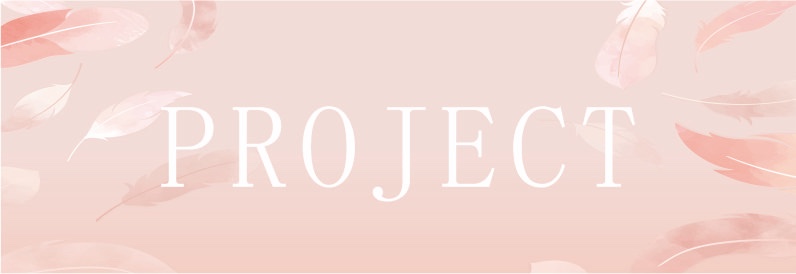
CONTRIBUTION
1. Add new documentations to an existing part
We will artificially cloned 14 new genes including promoters ( pro1380, pro2953, pro3035, pro3040, pro3071, pro05270, pro15290, pro22610, pro24880, ermE) and genes (CDO1, sep39, eGFP, AtHQT). Later, we assembled these promoters-genes and constructed 3 recombinant vectors. CDO1 encodes a cysteine dioxygenase with 190 amino acids which has been found in Streptomyces sp. SCUT-3. CDO1 could catalyze cysteine’s oxidation to produce sulfite, which is the key factor for feather degradation. The previous study have demonstrated that overexpression of CDO1 increased bacterial single-cell sulfite production and feather protein conversion efficiency obviously. Sep39 is a major protease involved in SCUT-3’s keratin hydrolysis, and previous work showed that its overexpression could increase SCUT-Osep39’s keratinase activity. Co-overexpression of CDO1 and Sep39 under constitutive promoter ermE increased SCUT-3’s disulfide bond reduction and keratin hydrolysis to achieve higher feather degradation efficiency which exhibited highest total peptide and amino acid yields among SCUT-3, SCUT-Osep39 and SCUT-Ocdo1.
2. Add new parts
In our 2021 project, we provide 13 new parts:
2.1 promoters
| name | number | website |
|---|---|---|
| pro1380 promoter | BBa_K3880000 | http://parts.igem.org/Part:BBa_K3880000 |
| pro2953 promoter | BBa_K3880001 | http://parts.igem.org/Part:BBa_K3880001 |
| pro3035 promoter | BBa_K3880002 | http://parts.igem.org/Part:BBa_K3880002 |
| pro3040 promoter | BBa_K3880003 | http://parts.igem.org/Part:BBa_K3880003 |
| pro3071 promoter | BBa_K3880004 | http://parts.igem.org/Part:BBa_K3880004 |
| pro15290 promoter | BBa_K3880005 | http://parts.igem.org/Part:BBa_K3880005 |
| pro22610 promoter | BBa_K3880006 | http://parts.igem.org/Part:BBa_K3880006 |
| pro24800 promoter | BBa_K3880007 | http://parts.igem.org/Part:BBa_K3880007 |
| ermE promoter | BBa_K3880012 | http://parts.igem.org/Part:BBa_K3880012 |
| pro05270 promoter | BBa_K3880013 | http://parts.igem.org/Part:BBa_K3880013 |
2.2 CDO1 (BBa_K3880008)
CDO1 could catalyze cysteine’s oxidation to produce sulfite, which is the key factor for feather degradation. The previous study have demonstrated that overexpression of cdo1 increased bacterial single-cell sulfite production and feather protein conversion efficiency obviously.
http://parts.igem.org/Part:BBa_K38800082.3 Sep39 (BBa_K3880009)
Sep39 is a major protease involved in SCUT-3’s keratin hydrolysis, and previous work showed that its overexpression could increase SCUT-Osep39’s keratinase activity.
http://parts.igem.org/Part:BBa_K38800082.4 eGFP (BBa_K3880010)
The full name is eGFP-enhanced green fluorescent protein. In our project, to verify the actual expression strength of the selected promoters, we chose as the reporter gene.
http://parts.igem.org/Part:BBa_K38800102.5 AtHQT (BBa_K3880011)
HQT is a hydroxycinnamoyl-CoA quinate hydroxycinnamoyl transferase that catalyzed the synthesis of chlorogenic acid. We improve part (BBa_K34580011) ( 2020 GDSYZX ) according to the codon preference of Arabidopsis Thaliana and named it AtHQT gene.
http://parts.igem.org/Part:BBa_K3880011Feather Degrading Bacteria
Compared with traditional hydrothermal and chemical treatments, the microbial fermentation process is the most efficient and environmental friendly. A few feather degrading bacteria (FDB) have been isolated from nature, such as the bacteria distributed in Bacillus, Staphylococcus, Enterococcus, Streptomyces, and Pseudomonas sp., among others. And a new FDB, Streptomyces sp. SCUT-3, was found to exhibit high-efficiency industrial feather degradation. The 16s RNA of SCUT-3 was sequenced and a phylogenetic tree demonstrate that SCUT-3 is a species of the Streptomyces genus [1]. The SCUT-3 convert feather into peptide and amino acid efficiently. The peptide and amino acid can be used as safe animal feed protein source, plant fertilizer, and microorganism culture medium.
3. Troubleshooting
(1) In the process of doing our experiment, we encountered many difficulties. At the very beginning, We had no idea about our project. One day, when our team members ate chicken, inspirations suddenly came. The chicken being eaten by humans, where did the chicken feather go? So we started a discussion about feather handling problems. After we talked several times, we decided to do something about feather. However, we actually did not know how to design our project. We checked a lot of information and consulted a lot of teachers. Finally, we started to design our project and experiments. The experiments were not going well. We failured many times in our experiments. After a period of inner struggle, some of our team members started to questioned ourbehavior and ideas at the beginning, and we were not confident in myself. But then we slowly adjusted our mentality and learned to sum up the experience in scientific research and discuss with everyone.Luckily, we finished our project.
(2) Besides, we interviewed the technical advisor of a chicken manufacturing company in China. For our project, they gave various evaluations and suggestions. Except for agreement of our idea, they also raised some questions about our project such as cost problem and environmental protection problem.
Although there are still some drawbacks in our project, we will adjust our project constantly. We have successfully solved many difficulties we met. We hope that there will be more people take part in our project and our project could be put into real-life practice.
